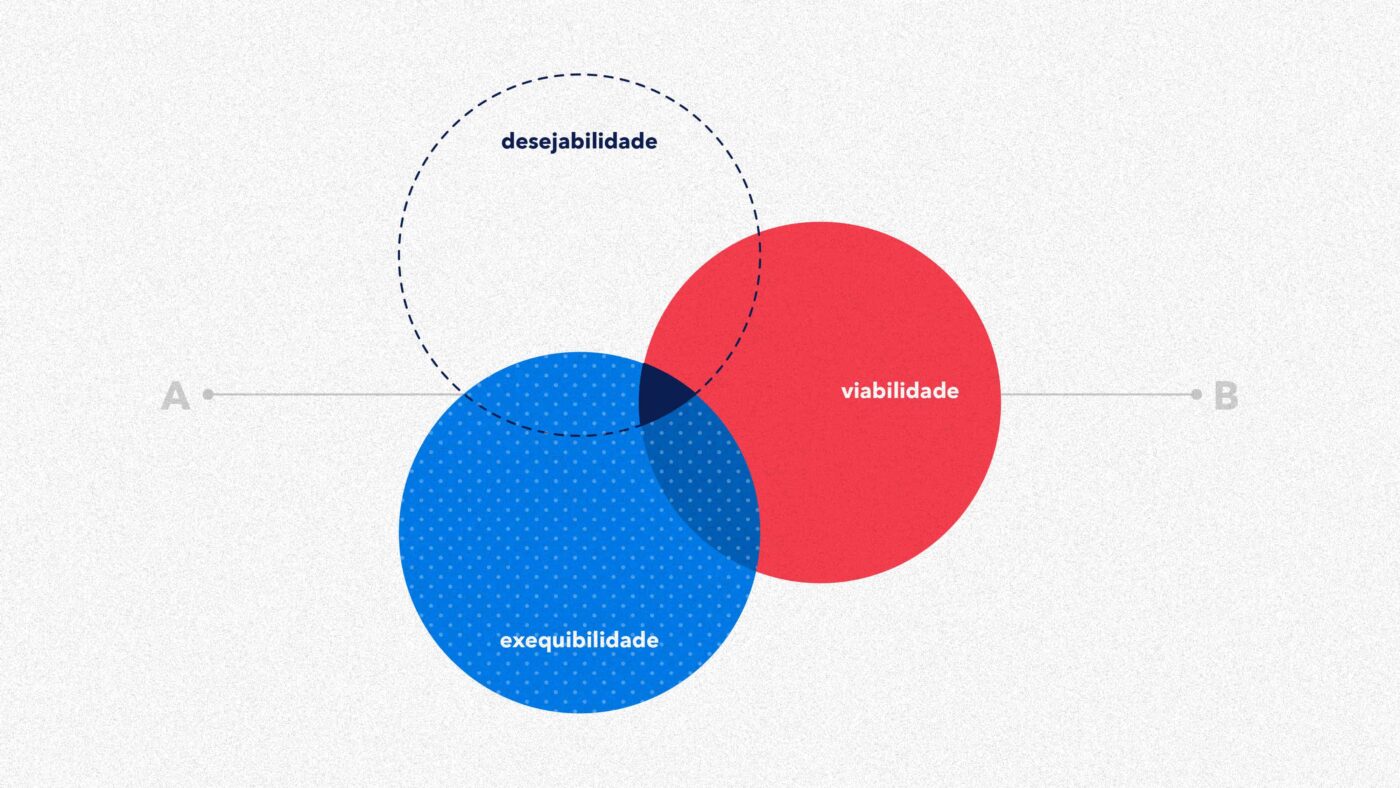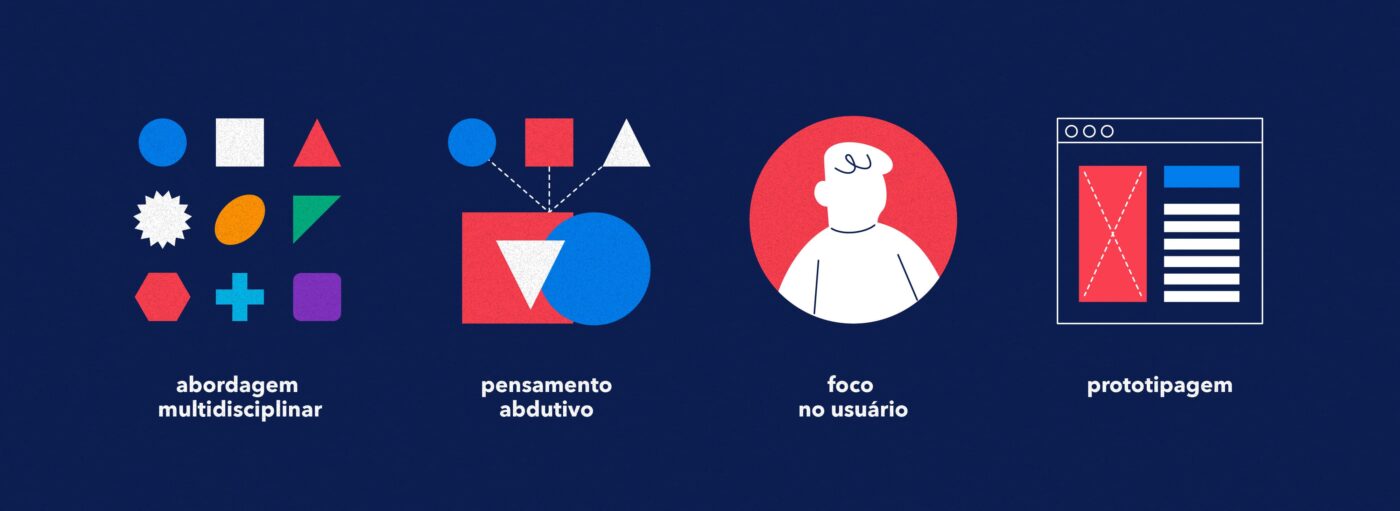But what is business design?
Business design is an operational style that combines business, strategic, and analytical approaches with the practices and mental model of design. It helps structure how each element of a business model affects the experience of customers and users.
In other words…
it is a method for generating business value through the lenses of business thinking – focusing on business’ layers – and design thinking – focusing on people.
The discipline works at the intersection of feasibility, viability, and desirability to create innovation, helping companies and organizations move from point A to point B through a designed business model, or business model created based on the design approach.

Why is business design so important?
In the BANI (“B:rittle, A:nxious, N:on-linear and I:ncomprehensible”) world we live in, business design can be extremely valuable to a company. The growth of startups, rapidly shifting markets, and ever-evolving technological possibilities require the creation of innovative business models and the reassessment of conventional ones. Business design, among other things, provides the tools and methods to develop and test business models with a truly human-centered value proposition. But the discipline addresses many other issues. Here are some of its applications:
- Design new services and revenue streams,
- Respond to growth challenges,
- Optimize costs and improve profitability,
- Design organizational structures,
- Reposition brands,
- Design the products value proposition,
- Reorganize existing models and discover new opportunities.
It is a strategy that can help brands and businesses overcome a variety of problems, but how does this relate to the design approach? How does a business designer act in the design process?
Understanding the role of a business designer
The three primary functions of a business designer during a design process are:
1. Use a business perspective to guide or inform the design process in order to make sure that the final product effectively addresses business issues.
2. Translate design solutions into value and impact using a language that business stakeholders are familiar with in order to prove that design provides solutions to business problems.
3. Use human-centered methodologies to strengthen the commercial and financial aspects of design work to produce services and products that are viable.
Learning the main characteristics of business design
To understand what is meant by business design and the mindset of business designers, it is essential to keep in mind four major pillars: multidisciplinary approach, abductive reasoning, customer focus, and prototyping.

– Multidisciplinary approach
Design thinking emphasizes the value of assembling a diverse team, including the different stakeholders and users of the company’s product or service, to avoid having one viewpoint dominate the outcome. This combination enables us to examine the issue from various angles and ask the pertinent questions, such as: Is it desirable? Can we really do that? Does this make sense for my business?
– Abductive reasoning
Abductive reasoning derives from design thinking. Most business school programs teach deductive reasoning – from rules to conclusions – and inductive reasoning – from examples to rules. In clearly defined contexts, both deductive and inductive reasoning perform well. Working with businesses, however, frequently entails having access to insufficient information in a highly complex system. The concept of wicked problems, a term coined by Herbert Simon – a scientist and the inventor of design thinking, explains it: the more complex and multidimensional the problems, the more they demand a collaborative methodology and a deep understanding of human needs. Therefore, abductive thinking, a combination of inductive and deductive reasoning, is actually more suitable for such situations.
– Focus on the user
Business design uses user-centered and empathic design approaches. The starting point of any challenge is people. Every strategy is built based on a deep understanding of users, including information on their problems, objectives, and pain points. This helps us develop solutions that best fit their lifestyles.
– Prototyping
Business designers create prototypes not only to prove their validity but also to learn. To come up with the best-case scenario, we don’t simply consult a spreadsheet. We launch products and services to test the business. We develop financial projections and business cases to prove the financial viability of a product. We outline product ideas that represent strategic trade-offs to inform our strategic decisions. We create extreme business model scenarios and use them as prototypes to learn from customers, suppliers, and other stakeholders. We occasionally produce business pitches that help make new business ideas concrete so that organizations can support the development of spin-offs or fund a startup.
Want to know more about design and branding?
In short, what is business design?
Business design is….
- A process whose key principle is to be user-centered.
- A mental model that combines different disciplines, generating quick insights.
- A qualitative and quantitative data analysis work.
- A discipline that looks simultaneously at the three spheres of a business model: desirability, feasibility, and viability.
- A design lens that views business models as something to be designed
How can CBA B+G help?
The discipline of business design is relatively new, the result of the growing pressure on design teams and design agencies to adapt their work to a business context. Today, it is part of CBA B+G’s worldview on design. From graphic to business design, we believe that design is first and foremost a way of thinking that uses methods and mental models to solve problems based on the consumer experience. We work beyond the surface of our clients’ businesses, fully meeting their needs through projects that include branding, service design, marketing, and business modeling.
If you want to know more about the subject or if you are interested in working with us on a project, do not hesitate to contact us.

